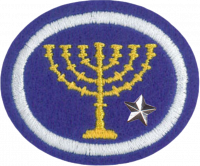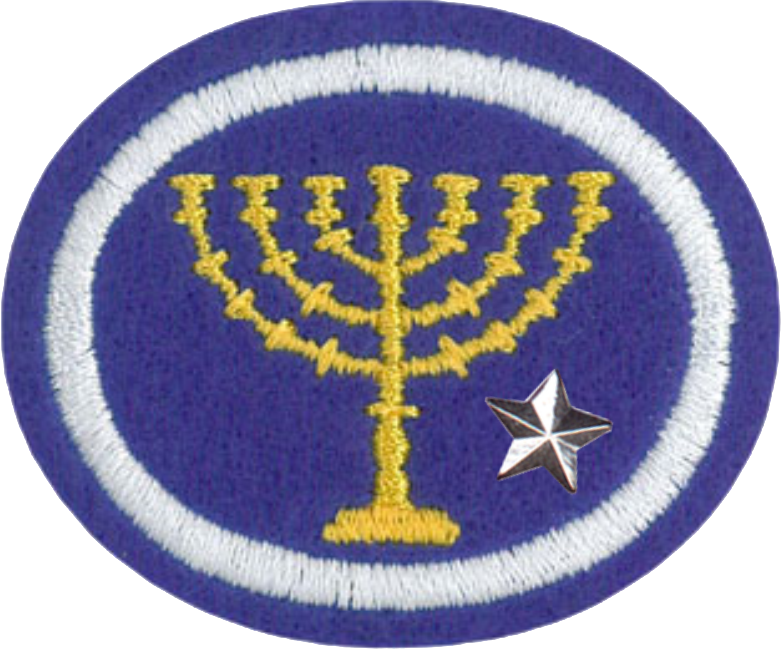Difference between revisions of "AY Honors/Sanctuary - Advanced/Requirements/es"
(Created page with "</noinclude>Hacer lo siguiente: <noinclude>") |
(Created page with "</noinclude>Leer Daniel 8:14 y el Comentario Bíblico ASD acerca del pasaje. ¿Cuál es el papel del santuario en este pasaje? ¿Cómo ve Daniel el papel del santuario en su p...") |
||
| Line 21: | Line 21: | ||
<noinclude></noinclude><section end=req3 /></b> | <noinclude></noinclude><section end=req3 /></b> | ||
| − | :<b>a. <section begin=req3a /><noinclude> | + | :<b>a. <section begin=req3a /><noinclude></noinclude>Leer las instrucciones para el ofrendas diarias y el día de la expiación que se encuentran en Éxodo 29:38-42, Números 28:3-8, Levítico 16, Romanos 12:1 y 2. Definir «ofrendas» (sacrificio, holocausto) y «expiación». Ya que el santuario era un símbolo del ministerio de Cristo, ¿qué se puede aprender de estos servicios que tienen un significado para nosotros hoy en día? Evaluar a través de la discusión o escribiendo en un diario cómo cree que estos símbolos ilustran el amor y el cuidado continuo de Dios por USTED. |
| − | </noinclude> | + | <noinclude></noinclude><section end=req3a /></b> |
| − | <noinclude | ||
| − | |||
| − | :<b>b. <section begin=req3b /><noinclude> | + | :<b>b. <section begin=req3b /><noinclude></noinclude>Leer Daniel 8:14 y el Comentario Bíblico ASD acerca del pasaje. ¿Cuál es el papel del santuario en este pasaje? ¿Cómo ve Daniel el papel del santuario en su profecía de 2300 días/años? ¿Cómo podría la «limpieza» mencionada aquí ser como la limpieza en el día de la expiación? |
| − | </noinclude> | + | <noinclude></noinclude><section end=req3b /></b> |
| − | <noinclude | ||
| − | |||
<b>4. <section begin=req4 /><noinclude><div lang="en" dir="ltr" class="mw-content-ltr"> | <b>4. <section begin=req4 /><noinclude><div lang="en" dir="ltr" class="mw-content-ltr"> | ||
Revision as of 03:16, 1 April 2021
Nivel de destreza
3
Año
2019
Version
21.12.2025
Autoridad de aprobación
División Norteamericana
Prólogo: Completar el plan de estudios de Encounter [Encuentro], unidad 8.4, «Santuario», para el 8vo grado o un programa académico equivalente relacionado con el santuario, o completar lo siguiente.
1. Tener la especialidad de Santuario.
2. Discutir lo siguiente:
- a. ¿Cómo nos ayuda el santuario a entender la reacción de Dios al «problema del pecado» que estuvo presente desde Génesis 3 hasta el Éxodo (y está presente hasta el fin del pecado después del milenio)?
- b. ¿Cómo ilustran las diferentes partes del servicio del santuario en la tierra el papel de Cristo como nuestro Salvador? Consultar Hebreos 4:14-16 y Hebreos 9:1-10:22 como parte de su descubrimiento.
3. Hacer lo siguiente:
- a. Leer las instrucciones para el ofrendas diarias y el día de la expiación que se encuentran en Éxodo 29:38-42, Números 28:3-8, Levítico 16, Romanos 12:1 y 2. Definir «ofrendas» (sacrificio, holocausto) y «expiación». Ya que el santuario era un símbolo del ministerio de Cristo, ¿qué se puede aprender de estos servicios que tienen un significado para nosotros hoy en día? Evaluar a través de la discusión o escribiendo en un diario cómo cree que estos símbolos ilustran el amor y el cuidado continuo de Dios por USTED.
- b. Leer Daniel 8:14 y el Comentario Bíblico ASD acerca del pasaje. ¿Cuál es el papel del santuario en este pasaje? ¿Cómo ve Daniel el papel del santuario en su profecía de 2300 días/años? ¿Cómo podría la «limpieza» mencionada aquí ser como la limpieza en el día de la expiación?
4.
Journal then discuss the following questions:
- a.
What environment makes God's presence most real to you?
- b.
If you could design a special place where you could feel close to God, what would it be like?
- c.
What would be the focal point? How would you furnish this place?
- d.
How might you come into God's presence when you can't go to a place of worship?
- e.
How do you think "sanctuaries" of today can meaningfully provide special places to feel God's presence?
5.
Determine the key messages of the sanctuary. Then, do one of the following individually or in pairs:
- a.
Create a Bible study with more than five texts that shows how the sanctuary foreshadows Christ's ministry for sinners, demonstrates a solution for the sin problem, and is the overarching answer to Christ's role throughout history. Present the study.
- b.
Create a board or card "trivia" game that requires knowledge recall and critical thinking about topics presented in this honor. Demonstrate the game.
- c.
Create a presentation for younger children's group, Sabbath School class, or group worship about one or more portions of the information about the sanctuary you have learned while earning the Sanctuary honors. Center your presentation around one key point (ex. God's forgiveness). Include at least one Bible text and one illustration in your presentation (no more than 5 minutes in length).
6.
In your discovery and study of the sanctuary, a lot of bloodshed has been covered and mentioned. Why did God require so much sacrifice and bloodshed?
7.
Do one of the following reflectively at the conclusion of your honor study:
- a.
Choose, listen to, and evaluate three songs that illustrate the themes present in the doctrine/teachings of the sanctuary. Share your playlist and evaluation with others.
- b.
Create a poem, song, whiteboard animation, or equivalent that demonstrates your understanding of the key theme(s) from the sanctuary that you feel are of most value to young people today.
- c.
Participate in a planned and formally organized "Sanctuary Prayer Walk." After completing the prayer walk, journal about your experience.
- d.
Write a prayer or series of shorter prayers that you imagine having with God as you envision walking to each of the pieces of furniture in the sanctuary. Focus each portion of the prayer on things in your life or experiences related to the significance of that piece of furniture.
- e.
Plan a service (vespers or equivalent) on the topic of God's mercy. Include a hands-on application of the forgiveness Christ offers as a part of the service.


